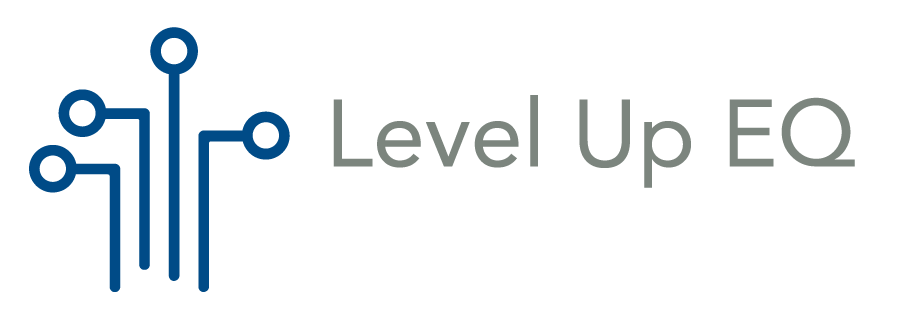Empathy at a Glance
Co-authored by Marla Skibbins and Lauren Puff.
—
It only took a moment. It took only one moment and one simple gesture for me to understand that I, and the presentation I was making, did not matter.
We were in the middle of a 30-minute meeting during which the budget and plans for a multi-million dollar new office project were being presented. We were using this new office project as an opportunity to put our values, culture, and mission into a physical space. We wanted employees, candidates, and guests to know our story and imagine themselves as part of it.
Months of work and planning had taken place prior to this meeting. Regular email updates had been sent. A full team of employees and contractors had logged hours of time getting the project as close to perfect on paper as possible. And this meeting was the one in which the CEO needed to provide the green light in order for the work to actually begin. Without that green light, the project would be delayed.
What was the gesture? He – the CEO – glanced at his Apple Watch.
“Empathy is about standing in someone else’s shoes, feeling with his or her heart, seeing with his or her eyes. Not only is empathy hard to outsource and automate, but it makes the world a better place.”
As leaders, we can relate to both sides of this story. At one point or another, we have both been the person presenting and the person checking our device. Excellence in people leadership requires the ability to access our empathy and to use that empathy to guide our behavior and craft our impact. Empathy defined is our ability to understand our impact and feel how that impact might be experienced by those we lead. Empathy was missing in that described moment.
Leaders who allow themselves to be distracted by their phones or watches or computers while in a meeting are experiencing one of three things:
They are unconscious of the non-verbal message this action might communicate and unconscious to the impact they are having on other players in the meeting;
They are conscious of any non-verbal message this action might communicate and are being passive-aggressive by momentarily checking out and looking at their device;
They are frustrated, upset or triggered by the situation and they are putting their attention on their device rather than acknowledging and speaking to the fact they are triggered.
If you think checking your Apple Watch, phone, or laptop during a meeting is harmless, remember the impact it had on the person in the story that began this article. Let’s look closer at two of the unspoken messages that may be sent when allowing oneself to be distracted by a device and examine how empathy could lessen the impact or change the outcome altogether.
Message number one: The person in front of me and the information he/she is presenting is not as important as what is on my device.
Regardless of professional title, giving attention to a device in a meeting – even if just for a few seconds – sends a message. If you happen to be the CEO, leader, or decision-maker, the waves from this action have a ripple effect. It takes empathy to acknowledge others in the room are impacted by your actions.
The intended message is sometimes very different than the message received. Perhaps the message being sent hasn’t even been considered. In this case, checking the device may appear to be quite simple – received notification, check Apple Watch, scan email, determine it does not need immediate attention, resume listening to the meeting. That series of events can happen in less than ten seconds. It doesn’t seem like much time. But in those moments one of the messages received by the person presenting or speaking is “You are not all that important nor is the work you are presenting.” Consider how that message impacts a person – an employee. How might morale be affected? What impact might it have on performance and engagement?
Here are a few strategies that use empathy and allow one to stay connected to the presenting speaker:
Say: “I am distracted by an email that just came through – I’d like to pause this meeting for a few moments while I respond and then we can resume.”
Do: Turn device notifications off.
Notice: When feeling the urge to check a device, bring awareness to the thought process.
Message number two: I’m feeling bored, frustrated or triggered.
When emotions like boredom and frustration arise, it is common to want to shift our attention in order to distract ourselves from uncomfortable emotions. However, if you are feeling bored or frustrated, it’s likely any meeting participants are sensing this. If you’re checking your phone to distract yourself the message you’re sending is likely: I am bored and I don’t feel like paying close attention.
If you are noticing boredom in yourself, it’s possible there are others in the room with you are also feeling bored or frustrated. Here are a few ways to use empathy in a situation like this:
Say: “I’m noticing boredom in myself and the room and I’d like to refocus. Why are we talking about this?”
Do: Leave your phone at your desk.
Notice: Scan the room a few times during the meeting or presentation and notice the energy in the room and look for any nonverbal messages or cues.
Every action has an impact. As a leader, actions often carry more weight and make an even larger impact. When allowing oneself to be distracted by a text or an email while in a meeting or conversation, the message sent can be harmful and cause disengagement, apathy, or frustration. When a leader brings empathy into interactions during a meeting and with employees, the message sent is powerful and can boost culture, improve productivity, and increase engagement.

